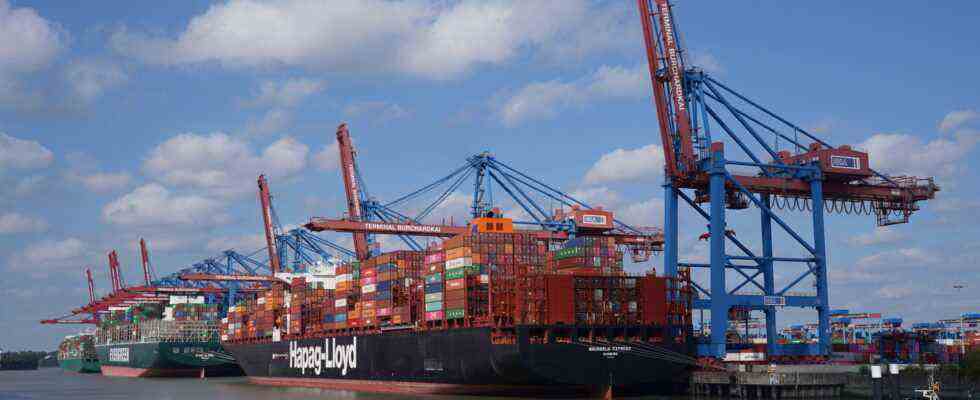Status: 01/14/2022 10:02 a.m
After the Corona crash, the German economy returned to growth and grew by 2.7 percent last year. The federal government and economists had originally expected more.
In 2021, the German economy recovered from the previous year’s Corona-related slump, albeit less significantly than originally expected. According to the first official estimate by the Federal Statistical Office, gross domestic product (GDP) grew by 2.7 percent in 2021. Economists had originally expected an increase of around four percent. The federal government had expected growth of 3.5 percent.
This also has to do with delivery bottlenecks, from which, according to the Federation of German Industries (BDI), many companies in the automotive, electrical and mechanical engineering industries are suffering. The bottlenecks slowed down industrial value creation in 2021 and 2022 by more than 50 billion euros. A lack of microchips, components and raw materials continued to hamper production for a long time.
decline in the fourth quarter
Between October and December, GDP even fell, estimated by between 0.5 and 1.0 percent compared to the previous quarter, as reported by the Federal Statistical Office. A more precise estimate is to be published at the end of January. The reason for the minus is the fourth corona wave with further restrictions in the fight against the virus pandemic. This impacted retail, hotels and restaurants, for example.
“Apparently, the Corona-related slump in services overcompensated for the slight increase that is emerging in industry,” said Commerzbank chief economist Jörg Krämer on the development in the fourth quarter. “For the first quarter of 2022, we expect another minus because of the omicron variant.” After that, however, the German economy should recover strongly.
According to calculations by the IfW research institute, the corona crisis will lead to a loss of economic output of an estimated 320 billion euros in the years 2020 to 2022. According to the IfW, the supply bottlenecks alone cost the industry 40 billion euros in added value.
Upswing should gain momentum in the spring
The experts now expect a return to the pre-crisis level only in the first quarter of 2022 – six months later than before. According to the experts, the fight against the coronavirus, which is still rampant, and the new restrictions in retail, for example, are likely to weaken private consumption as an important pillar of the economy.
According to the forecasts, the upswing will pick up speed from spring 2022 – driven above all by consumers’ desire to buy. The Bundesbank, among others, assumes that people in Germany will spend more money for a while than in the pre-pandemic times. The coffers of many households are well filled, for example because trips had to be canceled and leisure activities were temporarily restricted.
BDI urges caution
However, the BDI urges caution. Your President Siegfried Russwurm said yesterday that the hoped-for “post-corona boom” has not materialized so far. A recovery will be delayed until the summer, but this is a rather optimistic scenario. Because: Should the omicron variant of the corona virus de facto paralyze a country like China or other markets that are important for Germany like the USA, this would have devastating consequences for the German economy, according to Russwurm.
Economists also assume that companies will invest more again from spring, when there is less uncertainty about the further course of the pandemic. In 2022, economists expect the German economy to achieve comparatively strong growth of between 3.5 percent and a good four percent.

